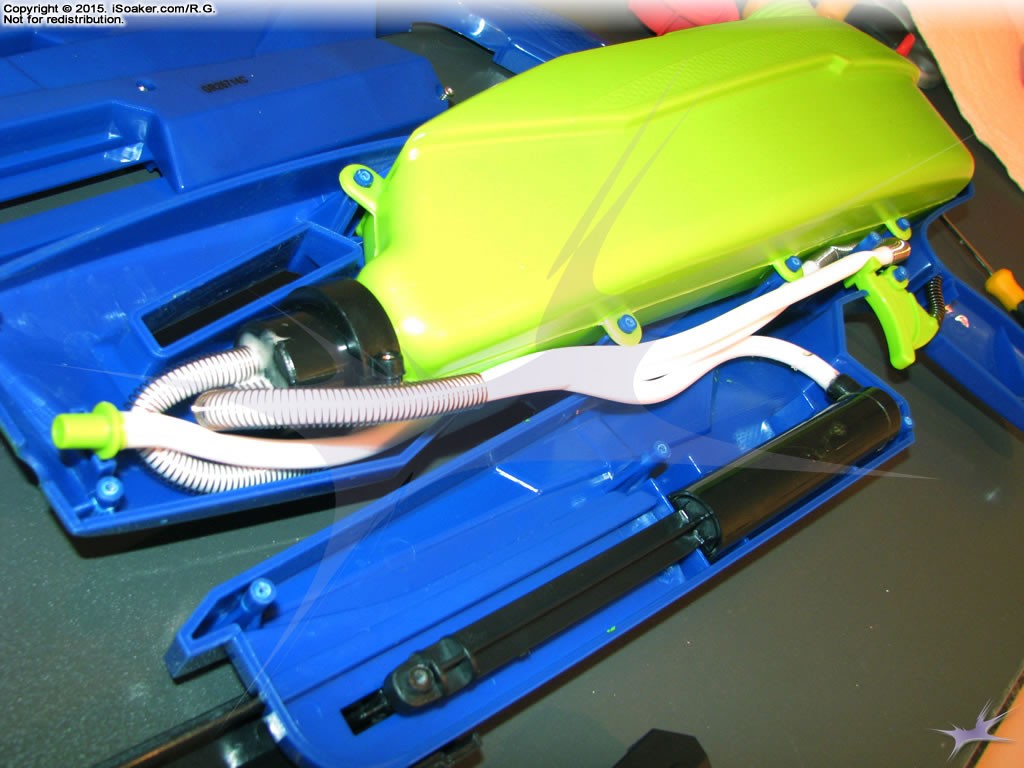The only thing that the Flood Force Hurricane and Flood Force Tsunami are accurately about in their names is that they are both disasters, albeit unnatural ones. Though both are pressurized reservoir water blasters, they perform so poorly that I end up longing for a pump-action water blaster when testing them out.
Baffled by how a pressurized water blaster can yield such pitiful power and have so many problems, I opted to open up my Flood Force Tsunami to look at its internals.
Upon prying apart the casing, the first major problem became all too apparent – tubing. Lots of tubing.

Considering the intake tube for the reservoir more-or-less spans the length of the reservoir, most modern water blasters have this tube feed into the trigger-controlled nozzle valve, then it’s just a short trip to the exit nozzle. Not for the Tsunami. Since SwimWays opted to use a pinch-trigger system instead of a pull or ball valve, the tubing ends up exiting the forward part of the reservoir, looping all the way back to the trigger, then back to the front to the nozzle. This increases the distance water must travel within the tubing 200% more than the reservoir-intake tube alone. All this excess tubing and 180-degree turns undoubtedly significantly decrease available flow rate and explains the resulting trickle-of-a-stream.
Of course, I was also curious about the pressure relief valve system and wondered if it was merely a problem of a defective valve. However, as much as I look at the internals, I just could not locate a pressure relief valve. But I heard a distinctive hiss once enough pressure had built up from pumping. Thus, I opted to do what I normally wouldn’t – I filled the reservoir while the casing was opened and began to pressurize it to try to figure out what was going on.
Initially, some water exited the nozzle indicating the pinch-valve was not closing properly so I adjusted that and pumped some more. Then, the hissing began and I saw water accumulating on the other half of the casing, but from where? Then I saw the droplets emerging from the forward side where the reservoir meets the tubing assembly. While all the screws and plastic were tight and in place, the assembly, itself, felt loose and as pressure built up within the reservoir, it simply began leaking. Intentional or not, considering both the Flood Force Hurricane and Flood Force Tsunami behave the same way suggests that this is either a consistent design flaw or an intentional means to prevent over-pressurization without needing to add in a specialized pressure-relief valve.
In the end, the mystery of why these pressurized water blasters perform so poorly can now be explained. As for why Target ended up choosing this brand of the Water Warriors brand remains to be seen. One thing is for certain – these pressurized Flood Force brand water blasters aren’t worth the plastic they are made from and definitely not worth their price tag.
As for internal pictures, I’ll get around to posting them soon.